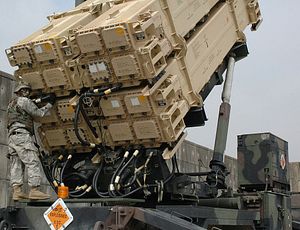In July, Taiwan will test-fire its Patriot Advanced Capability-3 (PAC-3) missiles at a U.S. missile range. The test, though scheduled under Taiwan’s previous Kuomintang government, stands to raise tensions between Taiwan and China.
Earlier this week, Beijing announced that it had cut off communications with the new Democratic Progressive Party government led by President Tsai Ing-wen.
The PAC-3 missile defense system is one of Taiwan’s most expensive defense platforms, with an estimate cost of $6.5 billion. It is set for use by Taiwan’s Missile Command, a new command created in 2004 combining air and ballistic missile defense and anti-ship missile targeting.
According to U.S. reports citing Pentagon sources, the test will take place at the White Sands Missile Range in the U.S. state of New Mexico in early July. Taiwan’s Defense Ministry decided to conduct the test in the United States to make it less difficult for Beijing to collect sensitive information about the system.
Additionally, the test of a missile system on Taiwanese soil would have far more provocative optics for Beijing. The Taiwanese Ministry of National Defense had said it would test the missile in New Mexico last fall.
When Taiwan tests the PAC-3 system at White Sands, it will become the second U.S. ally to do so, following Japan, which also tested its PAC-3s there in 2008.
In 2010, the United States offered the PAC-3s to Taiwan as part of an $11 billion defense package that also included P-3C Orion anti-submarine aircraft. (The PAC-3 was also mentioned in a 2008 notification to Congress.)
The PAC-3 is a system upgrade and redesign of the earlier generation PAC-1, PAC-2, and PATRIOT Air Missile Defense Systems. The system is capable of air and missile interception and involves three components, including the base radar set, an engagement control station, and the launching station that fires the interceptor missile.
The PAC-3, unlike its predecessor systems, features an interceptor with a “hit-to-kill” capability, increasingly its effectiveness against larger ballistic missiles and aircraft.
The PAC-3 interceptor has a 20 kilometer operational range and operates at supersonic speeds (Mach 4.1). The PAC-3 uses the AN/MPQ-65 passive electronically scanned array radar set.
Amid the Chinese People Liberation Army’s modernization and reorganization, the Chinese armed forces still see Taiwan as their main warfighting scenario. As a result, China has hundreds of medium- and short-range ballistic missiles aimed at Taiwan, intended for use in the case of a larger cross-strait conflagration.
U.S. PAC-3 missile defense systems will have the ability to blunt some missile strikes, but China could potentially still overwhelm Taiwan’s missile defense capabilities with sheer saturation. The PAC-3 Missile Segment Enhancement has shown some success in engaging multiple missile targets.

































